Last week I saw that Home Depot was running a deal on the new GE Link LED lights and a Wink hub which can control them. The deal was that if you buy 2 of the GE Link LED lights, you can buy the Wink home automation HUB for $20, instead of the normal $50 or so. That sounded pretty good, so I bought the lamps and the Wink hub. A few days later I bought a couple more bulbs.
I was curious about what was inside of the GE Link light so I tore one apart and checked it out.
There’s not a whole lot to it. The lamps are fairly heavy as they have a big aluminum outer shell for heatsinking the 16 LEDs mounted to the ring inside. The ring is mounted to the aluminum heatsink with a small amount of thermal heatsink compound, but it seems to be enough for this purpose.
After removing the LED circuit board and the aluminum housing I could see that the electronic components were potted in a green sleeve which was connected to the base.
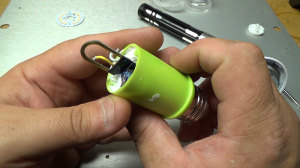 I cut off the green sleeve with my Dremel tool and started chipping away at the potting compound. It’s very easy to peel off and doesn’t bind tightly to the components, so I was able to remove most of it and get a pretty good look at what’s inside.
I cut off the green sleeve with my Dremel tool and started chipping away at the potting compound. It’s very easy to peel off and doesn’t bind tightly to the components, so I was able to remove most of it and get a pretty good look at what’s inside.
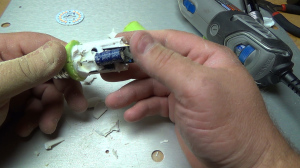 Once I got most of that cleared out of the way I could see that the assembly was made of two boards. One board contained the ZigBee wireless module and the other contained the switching supplies for the LEDs themselves. The ZigBee board appears to be based on the Marvel Technical Group 88MZ100 ZigBee Microcontroller SoC (System on Chip) design which has the ZigBee and a Cortex M3 integrated together, just rehashed by GE to fit their needs and add the little ‘filament’ antenna onto it. The picture below shows the 88MZ100 design, and the one below that shows the GE version of that board.
Once I got most of that cleared out of the way I could see that the assembly was made of two boards. One board contained the ZigBee wireless module and the other contained the switching supplies for the LEDs themselves. The ZigBee board appears to be based on the Marvel Technical Group 88MZ100 ZigBee Microcontroller SoC (System on Chip) design which has the ZigBee and a Cortex M3 integrated together, just rehashed by GE to fit their needs and add the little ‘filament’ antenna onto it. The picture below shows the 88MZ100 design, and the one below that shows the GE version of that board.
Since the programming header seems to be broken out on the right side of the board, it may be fairly easy to reprogram this to do one’s own bidding, but I think $14.95 is a bit much just to spend for a Cortex M3 with ZigBee on a board with only 2 data pins broken out 😉
The power supply board was pretty nicely built but not really anything special. The two main components on there were a Power Integrations LYT005D LYTSwitch Off-Line Low Power LED Driver which is rated at 120ma and also an NXP SSL21082AT high efficiency non-isolated LED driver chip with an internal FET for compact dimmable LED lamps up to 15 Watts.
I did a little bit of testing on the LEDs themselves, just curious to see what voltage they ran. Obviously they are run via PWM through the driver chips, so what they may actually be driven at through the on-board driver will vary a bit from what they look like from a DC constant current power supply.
Here you can see the LEDs driven at maximum brightness. It seems that anything above 4.0 volts per LED (48 volts for the array) and they start to get really hot and up near 4.3 volts each the color shifts to a blueish-white then they begin to fade. These LED chips look like about a dozen different brands out there.The chip design is similar to Nichia chips on their site.
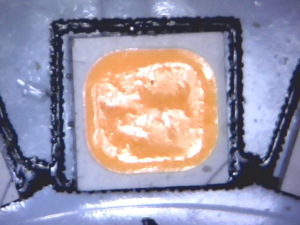 Here’s a picture of the LED chip side
Here’s a picture of the LED chip side
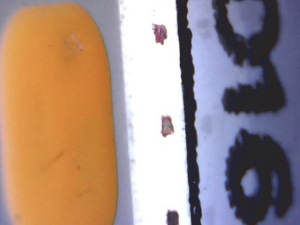 Without specs on the LEDs, one is left to guess or go by specs from other manufacturers for similar LEDs. Here are the LEDs running my HP 6274D 0-60V 0-15A power supply at about 45V at less than 1/4 Amp.
Without specs on the LEDs, one is left to guess or go by specs from other manufacturers for similar LEDs. Here are the LEDs running my HP 6274D 0-60V 0-15A power supply at about 45V at less than 1/4 Amp.
The home automation thing is just kicking off and whether it will catch on is yet to be seen. It has a good chance now more than ever since it has been rebranded and incorporated into the Internet of Things, where not just a home is automated, but where every electronic, electrical or mechanical device (with some extra electronics) out there can be easily connected to the Internet and monitored and mined for it’s information.
The one thing I don’t like about the Wink hub is that it requires an internet connection to work at all. If you lose your Internet connection, then you lose the ability to control your lights with the App, although you will still be able to turn the lights on and off with the switches, it is a limiting factor in the adoption of these systems. It seems that the people who are defining the Internet of Things and who have the financial backing to push product, also want to control your data and play the man in the middle. It’s obvious of course, where Google has search and your search history, demographics and everything else which they can use to sell you products, a connected Internet of things will be used for the same person, and whoever owns the data will make the money.
I also did a teardown video on the Wink HUB, check it out.
The GE Link Lights are able to be operated from other ZigBee radios and you can use a system like OpenHAB on a server in your home to run them and maintain complete control over them. With the addition of services such as MQTT to OpenHABs config (and others), you can back your setting to the web and also control those devices even when you are away from your home network. Here’s a video of the GE Link LED Lights being run from OpenHAB using a Philips HUE hub.

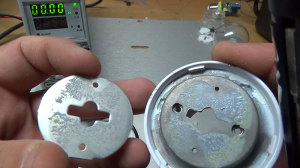
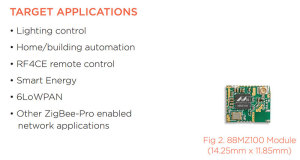
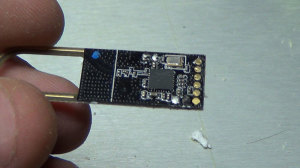
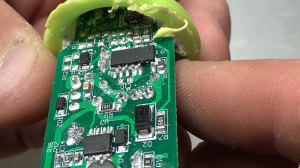
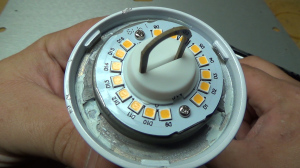
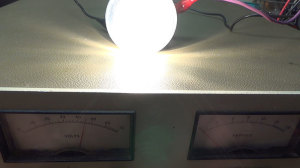
9 responses to GE Link LED Light and Wink HUB Teardown
Hi! You know if I can transform them to a 220v bulb? Cause I’m in Southamerica and here we use that voltage. Thabks
Do you have any info on how I can repur pose this as a light switch or inline power controller for devices? I have a number of the bulbs and would find better use somehow using it to control things like relays or put it in a series of bulbs as inline dimmer.
Thanks for your blog I like the videos.
Hello Sir,
Will the GE Lin work if i push in DC Voltage, say 12VDC? I ordered a couple of bulbs and found out they were 120VAC only 🙁
Thanks
The LED ring inside the lamp requires somewhere around 40-50 volts to light up and there’s no step up circuitry in the lamp so sorry to say that it won’t work. Just for kicks I just hooked one up to a 12V power supply and no-go, as expected.
Hi Jon,
Thanks for confirming 🙂 That was quick
Would it work if i get an AC to 50VDC driver, and plug the bulb there?
Thanks
No idea at the moment. As you might be aware Wink killed a large number of their Wink Hubs by accident while doing a security update and are recalling all of the non-working ones to have the firmware replaced at no charge to their customers (at least in the US). They’re also offering a $50 store credit for wink.com. With the credit I managed to order 2 x 2 Link lights w/Link hubs for a $49.98 and the shipping was free since it was an expensive enough order, so I have 4 more link lights on the way to play with once I get my hub back. If you buy the lights individually from their store they are $15 each, so the 2 lights + Link hub is the better option. For more information see here: https://wink.typeform.com/to/WflSEX
Hello Sir:
I too performed a tear down on the GE Link. I have determined that only three of the four interconnection pins connecting the 88MZ100 ZigBee module to the LCX LED driver board are used. One is common, one has to be ~ 3VDC power to the 88MZ100, one has to be a signal to the LED driver enable/disable dimmer. Did you ever go far enough to determine which pin is which? I wish to drive a small relay from the ZigBee module. Thanks. M5
Does anyone have a pinout or circuit diagram for the zigbee chip on this? The only one I’ve found is a bit lacking in description: http://wiki.winkathome.net/GE_Link_Bulb_Teardown_%26_Removal/Reuse_of_Zigbee_chip
I found some $6.50 GE Link bulbs at Home Depot the seem to be a lot easier to take apart than the above. but I’m trying to find a way to use the chip as a pass through controller kind of like a dimmable WeMo switch.
Hello
First of all, I would like to thank you for this experiment and tear down GE LINK.
Did you try to force it with 220VAC?
Thank you for your sharing.
Leave a reply to GE Link LED Light and Wink HUB Teardown